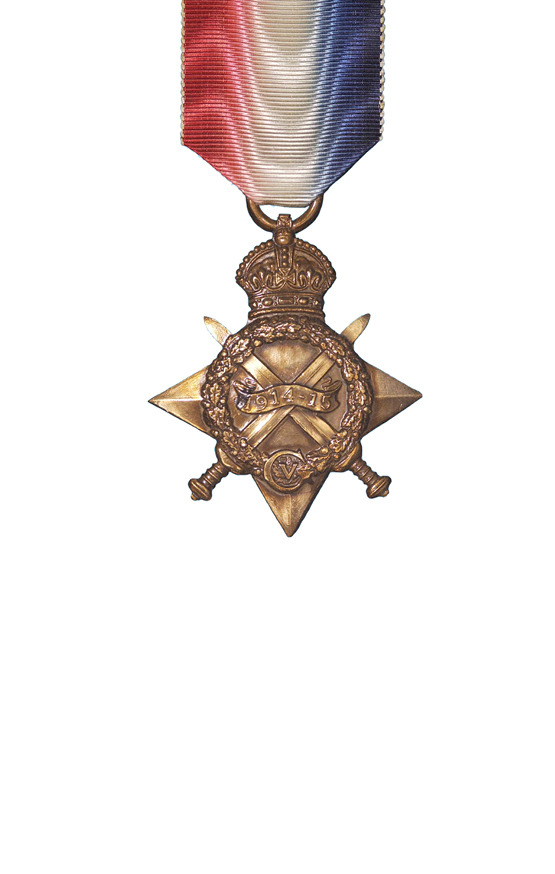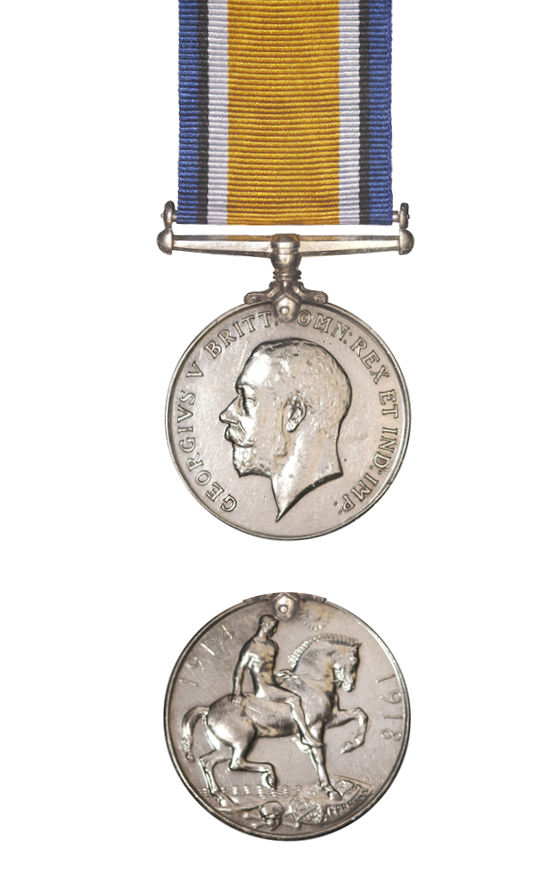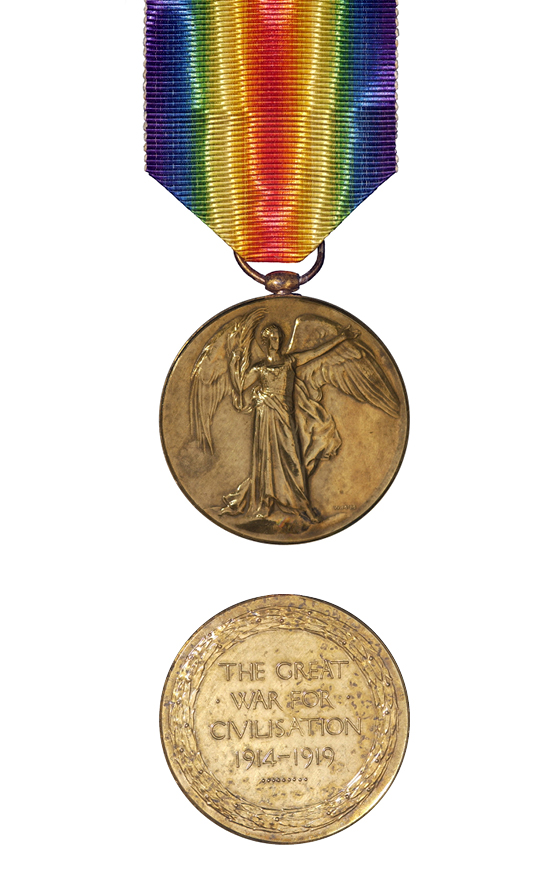

Display No. 14C
BURROWS, William Charles
William Burrows joined the Stokers branch of the Royal Navy in 1910. He trained at Portsmouth and in HM Ships Renown, Hermione, and Fisgard. He was confirmed in rate as Leading Stoker in 1914.
At the start of the First World War, he was serving in HMS Irresistible, assigned to the Fifth Battle Squadron, Channel Fleet. During the first few months of the war, Irresistible was stationed in home waters and also transported part of the Royal Naval Division’s Portsmouth Battalion to Ostend in Belgium. In February 1915 Irresistible left the Channel Fleet, deploying to the Mediterranean to support the Dardanelles campaign in which Allied warships attempted to gain control of the Dardanelles Strait and access to Istanbul.
On 18 March 1915, during a major attack on the Dardanelles Narrows, Irresistible struck an Ottoman mine which exploded, quickly flooding the engine room and disabling the ship. Under fire from the surrounding Ottoman forts, the decision was made to abandon Irresistible. It was during this encounter that Burrows was reported missing, probably killed in action. He was 24 years old when he died and is remembered at the Portsmouth Naval Memorial. William is the son of Emily ‘Ma’ Burrows, whose medals are also on display here.
Awarded medal(s)
Medal Description [Left to Right]:
The 1914-1915 Star

The 1914-15 Star was awarded to servicemen and servicewomen who served in the First World War between 5 August 1914 and 31 December 1915 in any “theatre of war”, provided they had not qualified for the 1914 Star. This included service at Gallipoli between 25 April 1915 and 31 December 1915, service in Egypt between 5 November 1914 and 31 December 1915, and service during the capture of German Samoa on 29 August 1914. Those eligible for the medal must have “served on the establishment of a unit in a theatre of war” during the relevant dates of operations in that area. The ribbon’s red, white and blue shaded and watered bands represent the flag of the United Kingdom.
The British War Medal

The British War Medal was instituted in 1919 to recognise the successful conclusion of the First World War (1914-1918). Its coverage was later extended to recognise service until 1920, recognising mine clearing operations at sea, and participation in operations in North and South Russia, the eastern Baltic, Siberia, the Black Sea and the Caspian Sea.
The Victory Medal

The Victory Medal was awarded in the First World War to all those who had already qualified for the 1914 Star or the 1914-15 Star, and to most persons who had already qualified for the British War Medal. The Victory Medal was awarded to all New Zealand troops serving overseas, except for those who arrived in Samoa after 30 August 1914 and those serving in Great Britain only. It has a unique double rainbow ribbon.
A bronze spray of oak leaves on the medal ribbon denotes that the recipient was Mentioned in Despatches during the period that the medal recognises. To be Mentioned in Despatches a member of the armed forces has had their name mentioned in an official report, written by a superior officer, and sent to a higher command. The report would describe the individual’s gallant or meritorious action in the face of the enemy.

